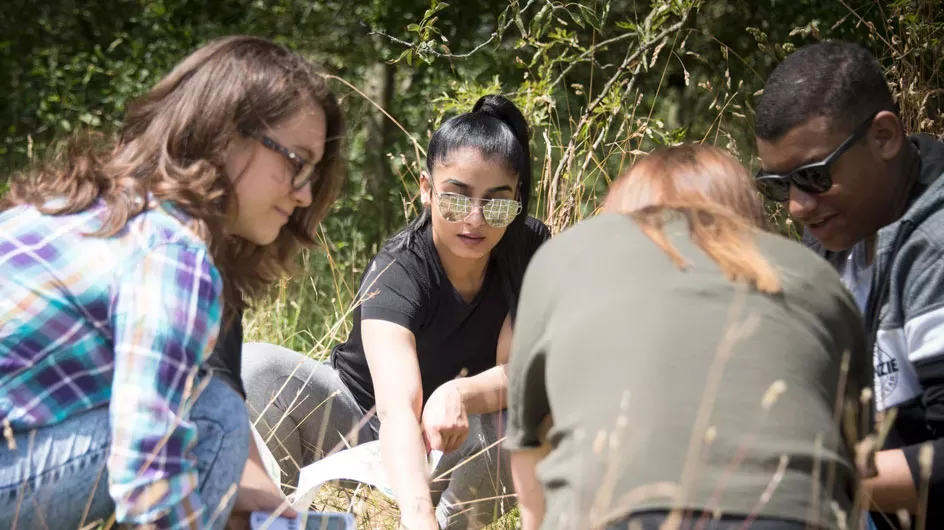KS5 Field studies I
What is biodiversity and how can we measure it?

Level
Duration
Allocated space
Overview
How can we measure biodiversity? Students get to grips with sampling techniques and Simpson’s Diversity Index in our diverse Gardens, gaining key skills and data for analysis.
Will plant species be more diverse in different areas? Why would we expect this and how can we measure it?
Pupils formulate and test their hypotheses as they investigate the factors affecting species diversity. They will use random sampling, quadrats and abiotic equipment in two different areas to gather data and analyse it using a diversity index.
This session can be combined with Field Studies II for a full day of ecology fieldwork.
Learning outcomes
Pupils will be able to:
- Gain an understanding of basic sampling strategies, methods and equipment.
- Describe how to measure species richness and evenness in a habitat and use Simpson’s Index of Diversity.
- Interpret and analyse the results found.
- Justify the use of one method over another and suggest improvements for further sampling.
- Explain why ecologists use various sampling techniques.
We will ensure learning outcomes are relevant to your pupils and will focus on your chosen exam board.
Keywords
Ecology, biodiversity, ecosystem, community, population, species richness, species evenness, sampling, transect, random, systematic, stratified, abiotic, biotic
Skills
a) Independent thinking
- Apply investigative approaches and methods to practical work
b) Use and apply scientific methods and practices
- Safely and correctly use a range of practical equipment and materials.
- Follow written instructions.
- Make and record observations.
- Keep appropriate records of experimental activities.
d) Instruments and equipment
- Use a wide range of experimental and practical instruments, equipment and techniques appropriate to the knowledge and understanding included in the specification.
Practical techniques
1. Use appropriate apparatus to record a range of quantitative measurements (to include mass, time, volume, temperature, length and pH).
11. Use sampling techniques in fieldwork.
Mathematical skills
- A.0.3: Use ratios, fractions and percentages.
- A.1.2: Find arithmetic means.
- A.1.5: Understand the principles of sampling as applied to scientific data.
- A.2.3: Substitute numerical values into algebraic equations using appropriate units for physical quantities e.g. a formula to calculate an index of diversity.
Curriculum links
AQA - Biology
3.4.6: Biodiversity within a community
3.4.7: Investigating diversity
Edexcel A - Biology
AS level
Topic 4 Biodiversity and Natural Resources 4.2 iii)
Edexcel B - Biology
AS level
3.3: Biodiversity i)
OCR A - Biology
A level
4.2.1: Biodiversity (c) (d) (b) i, ii (f)
OCR B - Biology
A level
3.1.3: The development of species: evolution and classification (h)
BTEC - Biology
Unit 3: Science Investigation Skills
F2: Sampling Techniques
